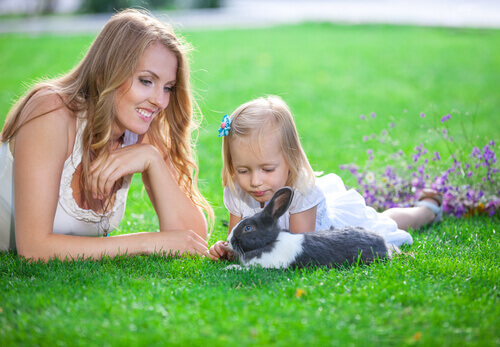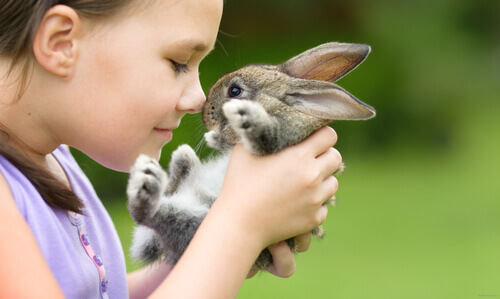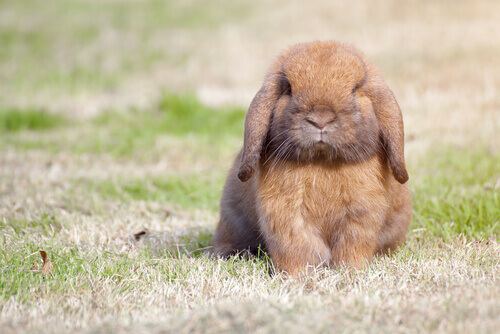Tips for Playing With Your Rabbit

Dogs and cats are the classic pets for most people, and all of us, whether we have one or not, know how to play with them. But when it comes to a less conventional pet, playing may raise some doubts. For example, playing with your rabbit, how do you do it?
If you’ve decided to adopt a rabbit, congratulations! It’s an ideal pet that doesn’t give much work but can bring you a lot of joy. To make the most of it, we’re going to give you some advice on how to play with it and have a great time.
Playing with your rabbit, how?
Playing with your rabbit requires a series of factors to take into account, even before you start:
Get to know your pet well
Getting to know your pet takes some time, so don’t venture into playing with your rabbit if you don’t yet know how far you can go. It takes time to see its reactions to certain gestures of yours, to know what it likes and what it doesn’t like. You have to earn its trust.
Let it out of its cage and see what it likes, what it wants or what it’s curious about. This will allow you to know, for example, what kind of toys it would like to have in its toy box.
Cuddles
Start with strokes on the head and the sides of the mouth. This will make it feel at ease, and you’ll gain its confidence. When this happens, it’ll be ready for you to start taking your hand away and make them chase it or look for it to keep stroking them. The game begins!

Buy toys
Once you know some of your new pet’s traits, you’ll be able to buy the toys that it likes best and that match its personality. There’s a great variety of toys for rabbits on the market. Also, an option that works in many cases is to try some dog toys.
It all depends on what your pet likes and its abilities. There are rabbits that are good at running, others that are more curious, and others that enjoy you throwing things. Choose the toys according to their own particular personalities.
Run after it
This is one of the games that rabbits like most. Run after it so that it tries not to get caught. Pretend that you’re chasing it, and you’ll see what a great time you’ll both have. Afterwards, give it lots of cuddles and a prize.
Run together
If you have a long hallway or a garden, run with it. Start by yourself and have it follow you, then you can race. You’ll have a great time. Remember that this is an activity to be done in an enclosed or fenced place that the rabbit can’t get out of.
Be patient when playing with your rabbit
Every pet needs to adapt, but especially rabbits, as they can be shy at first. Give it time and don’t force it. Greet it happily and with a soft tone of voice. Place yourself at its level and schedule regular play sessions, always at the same time.

They’re most active in the morning, so that’d be the ideal time for playing with your rabbit. Remember that whether it wants to play with you or not, a rabbit should be out of its cage at least four hours a day. Otherwise, it could become gloomy. No matter what size its cage is, it should feel free to run around and breathe a different kind of air.
Make a toy for it
Rabbits are curious by nature, and there are owners who have decided to build a castle or a fort with walls and doors from a cardboard box that the rabbit can go in and out of.
This will allow your rabbit to play on its own while you’re not there, and you could even play with it by hiding food inside the castle.
You just have to be clever and have a little imagination in order to play with your rabbit. Even if they aren’t the most conventional of pets, they’re easy to understand. If nothing works, try these tips.